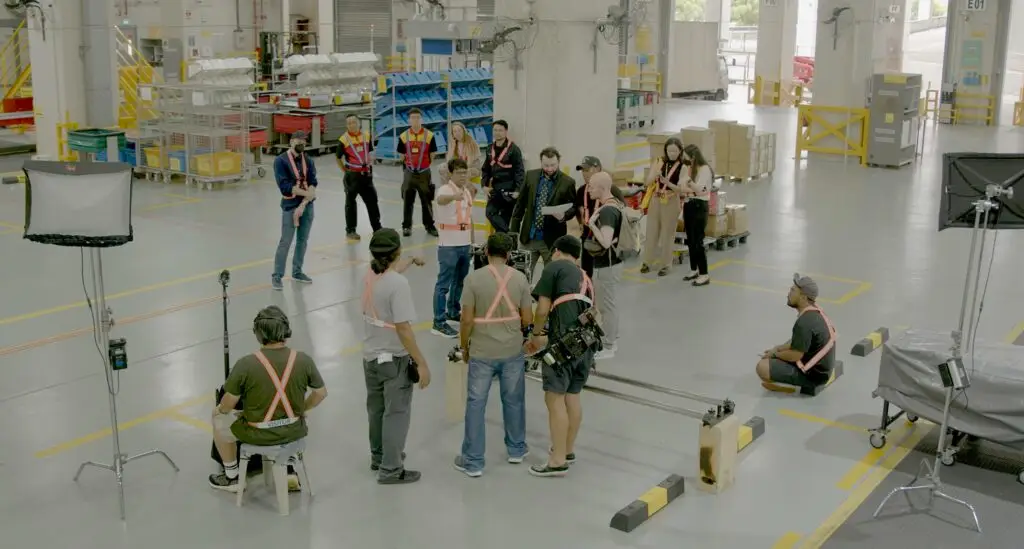
Acquire a comprehensive understanding of the process of creating a video or film, including the initial draft to the final edit. Additionally, gain valuable insights from industry specialists to ensure successful execution of each stage in video production.
Uncover the secrets behind the creation of cinematic illusions
Unveil the truth behind the seemingly effortless and seamless final product of a film or video, which is actually the result of arduous labor by a large production team over the course of several months or years. The film-making process can be divided into three distinct stages: pre-production, production, and post-production. Despite its apparent complexity, by following professional guidance and gaining an in-depth understanding of each phase, you can embark on your journey in video production with confidence.
Pre-production : Planning Stage
The initial stage of a video project is known as pre-production. It involves all the preparations necessary to establish a solid foundation for the project, ranging from financing to staffing, and everything in between. For a feature-length film, this stage can last anywhere from three months to a year, allowing ample time to iron out any potential issues before the production begins. The objective is to keep the rest of the project running efficiently and within budget.
Every video project is unique, and the pre-production stage will vary accordingly. The needs, budgets, and creative goals of a local marketing video will differ from those of a high-budget music video. However, regardless of the type of video being produced, it’s crucial to allocate sufficient resources and time for pre-production planning as it sets the pace for the entire project.
A sneak peek inside the production planning process
The producer and director are typically the individuals responsible for launching a project. The director is in charge of all creative aspects while the producer oversees the logistical elements, such as obtaining funding and hiring crew members. The producer may also contract a video production company to manage the services and assemble their own production team.
The writer, cinematographer, and director work together to storyboard the film and develop the script. If the script is already completed, their focus is on determining how to translate it to the screen. Meanwhile, the production team must identify shooting locations and talent, finalize budgets, and establish the project timeline.
It is important to have a director and cinematographer on board to evaluate locations and determine which would be appropriate for filming. A shot list should also be created during pre-production to ensure critical shots are not overlooked and to guide the shooting schedule during production.
Consideration should also be given to the video’s release, with time allocated to formulating a marketing strategy that will be executed concurrently with production.
Before filming commences, the team should be aligned on the overall strategy and direction for the project. Pre-production provides an opportunity to address potential issues, enabling the focus during production to be solely on performance and capturing the best image.
Production
Production refers to the actual filming of the video or movie, following the planning and preparation in pre-production. During production, the crew will be on set to bring the script to life and capture all necessary shots. This stage can last anywhere from a few days to several months, depending on the scope of the project. The duration of filming varies depending on the size of the project – it could take anywhere from a few days for a short promotional video to several months for a full-length film.Known as principal photography, this stage involves capturing footage and recording any supplementary sound elements such as voiceovers or background noise.
Assembling a competent and versatile crew is crucial for successful filming. A small crew might consist of a camera operator, director, producer, sound mixer, and lighting technician to cover the essentials. The director and cinematographer work closely to direct the actors and achieve the desired visual effects. The audio crew is also present to record sound and dialogue, while the production design team oversees the set and costume design.
Production requires careful organization and coordination, as each shot and scene must be captured in a specific order. The shot list created during pre-production is used as a guide to ensure all necessary shots are captured, while the timeline and budget set during pre-production serve as reference points to keep the production running smoothly.
When working with non-professional actors or businesses, it’s important to customize the filming process to meet their needs. Rather than providing them with a call sheet like the rest of the crew, send clear and concise instructions on when and where they need to be, along with any other requests. To save time, set up lighting, sound, and camera equipment using stand-ins, then have the non-actors come in later and be ready to go.Overall, the goal of production is to bring the vision to life and capture all necessary footage to create the final video or movie.
Post-production
Post-production is the final stage of film production, where all the footage captured during production is edited and pieced together to create a final product. This includes editing video and audio, adding special effects and music, and putting together the final cut. Depending on the size and complexity of the project, post-production can take anywhere from a few weeks to several months.
Here, a team of specialists come together to transform the raw footage into a polished, high-quality video. In post-production, the editor works closely with the director and producer to bring the vision for the film to life. They will review all the footage and select the best shots, and then assemble them into a cohesive story. Color correction and grading are done by colorists, while audio recordings are mixed by sound engineers.
The editing process can be time-consuming, taking several months for larger projects, but it’s an essential step in ensuring the final product is polished. This phase allows for a more flexible timeline compared to principal photography, providing an opportunity to fine-tune every aspect of the video. Industry-standard video editing software are often used by editors to achieve a professional result.
It is important to review the final product multiple times before release to make sure it meets the desired quality and creative vision. The director, producer, and editor should work together to make any necessary changes or tweaks until they are satisfied with the final product. Finally, the final cut is mastered, and the film or video is ready to be distributed to the world.
Ready to bring your video production vision to life?
Offing Media is here to guide you through the process from start to finish. Contact us today to learn more about our video production services and how we can help bring your project to life.
- Hiring a video crew in Singapore
- Event Videography: Capturing Your Event’s Highlights in Singapore
- Overseas Video Production: Navigating the Challenges of International Filming
- Safety Induction Video Services I Singapore
- Expert Construction Safety Video Production in Singapore
- Video Production Company in Singapore
- How Can Live Streaming Benefit Your Business?
- Do Storyboards make Video Production Easier or Harder?
- Top 10 AI Voice-Over Apps: Changing the Narration Game in 2023
- How to Choose the Right Style for Your Explainer Video: 2D, 3D or Animation?
- Offing Media: Your Premier Safety Video Contractor in Singapore
- Filmmaking in Singapore
